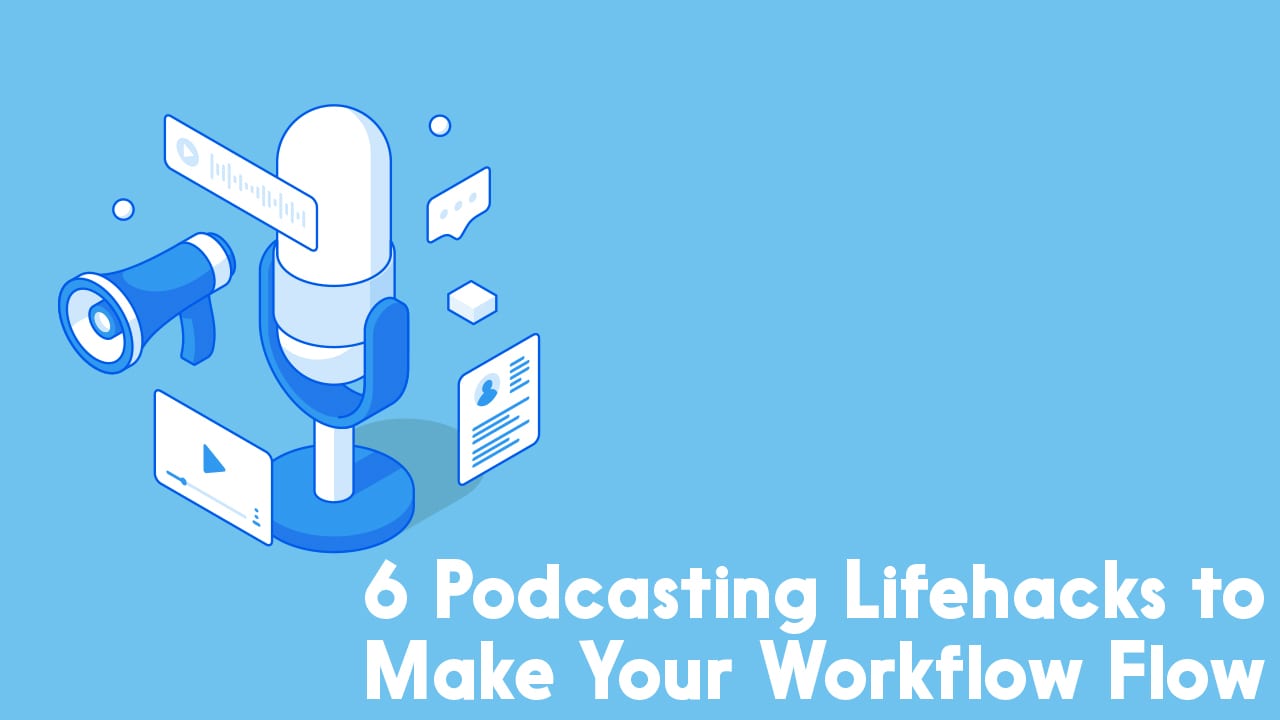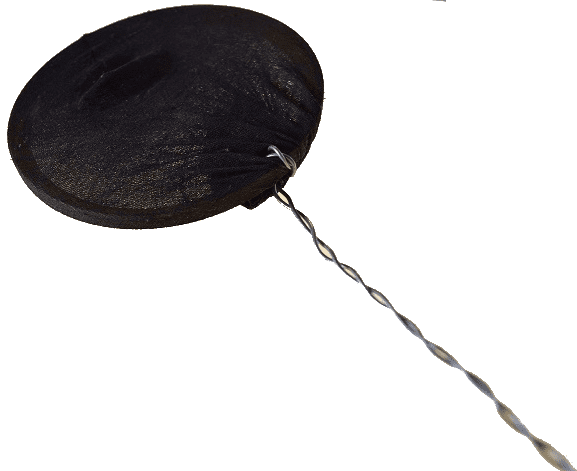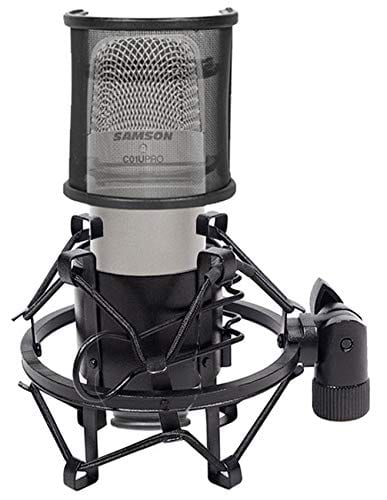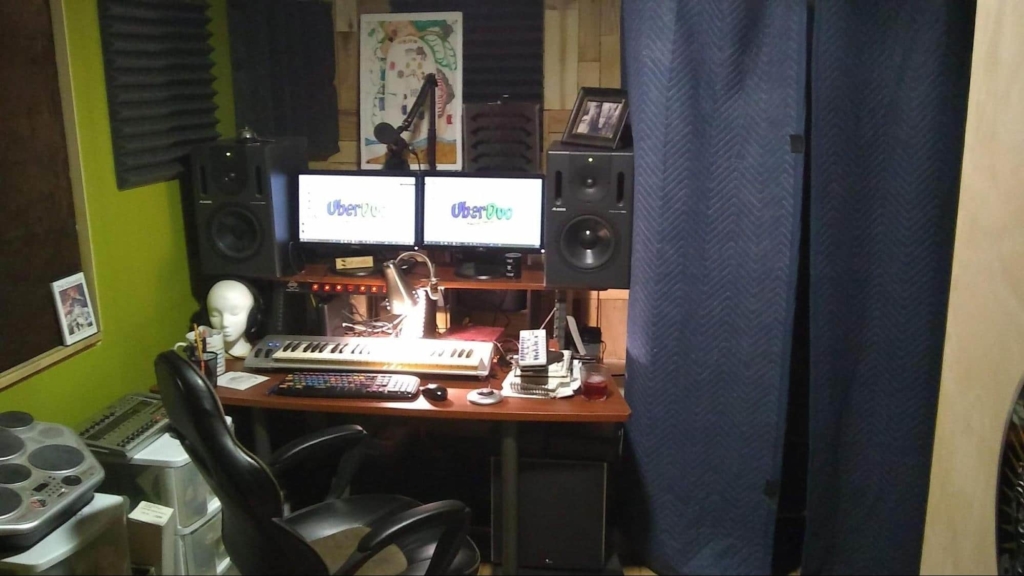6 Podcasting Lifehacks to Make Your Workflow Flow

With all the hats we wear as podcasters, it’s a wonder we get anything done. Whether you have one podcast, or several, the challenges can be overwhelming, so here are some tricks to make life easier around the studio, so you can get to what matters most.
1. Checklists

Checklists are an essential part of my entire workflow. With so many hats to wear from prep to release, steps can get overlooked and details can get lost. Having a checklist for all of your repetitive tasks and settings saves time and bandwidth. It lets you can focus on more nuanced details without being distracted over whether or not you remembered to arm a track before you hit record. Or remembered to hit record.
Numerous checklists exist around the internet, but everyone’s workflow is different, so it’s important to customize your checklists accordingly. I use Google Keep to manage my lists, so I have them whether I am recording at home, in the studio or in the field.
2. Cable Management – Binder Clip
For the latest in cable management and storage technology, look no further than the humble binder clip. In addition to holding scripts and documents together, binder clips are more often seen in my studio managing my overwhelming assortment of cables. Best of all, they come in several sizes.

Clip several to your desk or work surface and feed your cables through to keep them organized, tidy, and quickly accessible without getting lost. There are hundreds of uses for binder clips, from headphone holders, to microphone clips, to just having something to squeeze in your hand while considering that next edit.
Or you can use them to bind and store your cables. Use small clips for your earbuds and USB cables, and larger clips to bundle and store XLRs and extension cords. It even comes with its own hangable clip.
Here’s a deeper dive into the world of studio cable management.
3. Cable Management – Gaffer Tape

Not to be confused with duct tape, gaffer tape is stronger and more versatile, if a little more expensive. Gaffer tape is designed for use by A/V and theatre professionals. It’s strong enough to hold microphones in place, great for taping cables to the floor to prevent trip hazards, and makes for great temporary cable management. Gaffe tape can be removed and reapplied and doesn’t leaves a sticky residue.
4. Windscreens – Nylons and Socks

Okay. Pop filters and windscreens aren’t the most expensive budget item. But if you don’t have one lying around, when you need them, you need them.
Nylons make fantastic pop screens. Wrap one around a ring like an embroidery hoop or a cut of some 4 inch PVC. A wire hanger gives the support you need to attach it to your mic stand (Using Gaffer Tape. Or a binder clip, perhaps).
Need more windscreens? Drop a cotton athletic sock (preferably clean), over the microphone to help cut plosives and light wind noise.
5. Shock Mount – Hair Ties

Got a shock mount? Keep losing the elastic rings that come with it? Hairbands and elastic bands make a suitable shockmount, so long as they hold enough tension to support the microphone without it touching the frame. Alternatively, there are several DIY plans online for building your own shock mounts using hair ties.
6. Instant Audio Booth – Sound Blankets

I cannot stress enough the value of sound blankets in controlling the reverb in an audio space. We use these in film, field recording and in the studio to make baffles and booths. They’re durable, easily found (they’re known as quilted moving blankets, officially) and inexpensive (In the U.S. Harbor Freight sells them for about $9). They can be easily hung to bars and studs using spring clamps. I’ve used commercially available backdrop stands, C-stands, PVC, and rolling wardrobe racks as frames with good results.
Here’s a deeper dive into the world of sound blankets.
Final Thoughts
Podcasting workflows are personal. Each person or team has a method of doing things, whether for continuity, or for simplifying the brain bandwidth of a workflow.
There are tons of creative workarounds and audio hacks out there. Find some that work for you, or invent your own and share them with us. How about you? What’s you’re favorite audio lifehack? Fire us a tweet at @thepodcasthost and let us know!

One final podcast workflow lifehack is our podcast-maker app Alitu. If you want to save loads of time on the editing and publishing side of things, or, if you don’t have the slightest clue about audio production, then this is the tool for you. For more info, check out our guide on how to make a podcast on Alitu, or try it out free for 7 days.
